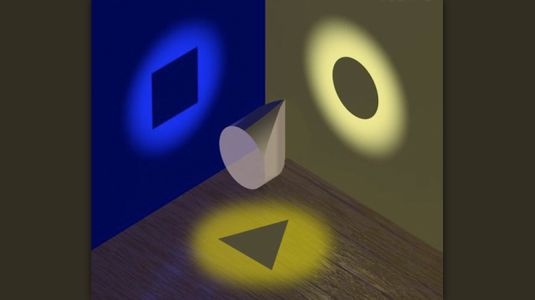-
PRX Quantum2021Over the past few years, machine learning has emerged as a powerful computational tool to tackle complex problems in a broad range of scientific disciplines. In particular, artificial neural networks have been successfully used to mitigate the exponential complexity often encountered in quantum many-body physics, the study of properties of quantum systems built from a large number of interacting particles
-
Physical Review Research2021The disjointness of a stabilizer code is a quantity used to constrain the level of the logical Clifford hierarchy attainable by transversal gates and constant-depth quantum circuits. We show that for any positive integer constant c, the problem of calculating the c-disjointness, or even approximating it to within a constant multiplicative factor, is NP-complete. We provide bounds on the disjointness for
-
PRX Quantum2021As quantum computers approach the fault tolerance threshold, diagnosing and characterizing the noise on large scale quantum devices is increasingly important. One of the most important classes of noise channels is the class of Pauli channels, for reasons of both theoretical tractability and experimental relevance. Here we present a practical algorithm for estimating the s nonzero Pauli error rates in an
-
PRX Quantum2021Efficiently estimating properties of large and strongly coupled quantum systems is a central focus in many-body physics and quantum information theory. While quantum computers promise speedups for many of these tasks, near-term devices are prone to noise that will generally reduce the accuracy of such estimates. Here, we propose a sample-efficient and noise-resilient protocol for learning properties of
-
Nature2021Realizing the potential of quantum computing requires sufficiently low logical error rates(1). Many applications call for error rates as low as 10⁻¹⁵ (refs. 2,3,4,5,6,7,8,9), but state-of-the-art quantum platforms typically have physical error rates near 10⁻³ (refs. 10,11,12,13,14). Quantum error correction(15,16,17) promises to bridge this divide by distributing quantum logical information across many
Related content
-
February 28, 2025In experiments involving real quantum devices and algorithms, automated-reasoning-based method for mapping quantum computations onto quantum circuits is 26 times as fast as predecessors.
-
February 27, 2025Prototype is the first realization of a scalable, hardware-efficient quantum computing architecture based on bosonic quantum error correction.
-
January 14, 2025Key exchange protocols and authentication mechanisms solve distinct problems and must be integrated in a secure communication system.
-
April 1, 2024Caltech professor and Amazon Scholar John Preskill wins Bell Prize for applying both classical and quantum computing to the problem of learning from quantum experiments.
-
February 3, 2023Learn how physics and computer science influence each other and about the importance of the scientific perspective when it comes to quantum technology.
-
February 2, 2023Research on “super-Grover” optimization, quantum algorithms for topological data analysis, and simulation of physical systems displays the range of Amazon’s interests in quantum computing.



















